An assessment of the impacts of litter treatments on the litter quality and broiler performance: A systematic review and meta-analysis
- PMID: 32374780
- PMCID: PMC7202646
- DOI: 10.1371/journal.pone.0232853
An assessment of the impacts of litter treatments on the litter quality and broiler performance: A systematic review and meta-analysis
Abstract
Objective: The choice of the most suitable litter treatment should be based on scientific evidence. This systematic review assessed the effectiveness of litter treatments on ammonia concentration, pH, moisture and pathogenic microbiota of the litter and their effects on body weight, feed intake, feed conversion and mortality of broilers.
Methods: The systematic literature search was conducted using PubMed (Medline), Google Scholar, ScienceDirect and Scielo databases to retrieve articles published from January 1998 to august 2019. Means, standard deviations and sample sizes were extracted from each study. The response variables were analyzed using the mean difference (MD) or standardized mean difference (SMD), (litter treatment minus control group). All variables were analyzed using random effects meta-analyses.
Results: Subgroup meta-analysis revealed that acidifiers reduce pH (P<0.001), moisture (P = 0.002) ammonia (P = 0.011) and pathogenic microbiota (P <0.001) of the litter and improves the weight gain (P = 0.019) and decreases the mortality rate of broilers (P<0.001) when compared with controls. Gypsum had a positive effect on ammonia reduction (P = 0.012) and improved feed conversion (P = 0.023). Alkalizing agents raise the pH (P = 0.035), worsen feed conversion (P<0.001), increase the mortality rate (P <0.001), decrease the moisture content (P<0.001) and reduce the pathogenic microbiota of the litter (P<0.001) once compared to controls. Superphosphate and adsorbents reduce, respectively, pH (P<0.001) and moisture (P = 0.007) of the litter compared to control groups.
Conclusion: None of the litter treatments influenced the feed intake of broilers. Meta-analyses of the selected studies showed positive and significant effects of the litter treatments on broiler performance and litter quality when compared with controls. Alkalizing was associated with worse feed conversion and high mortality of broilers.
Conflict of interest statement
The MADP received salary from Brasil Foods S/A. This does not alter our adherence to PLOS ONE policies on sharing data and materials. The other authors declare no potential conflict of interest.
Figures
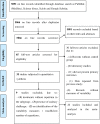
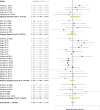
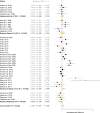
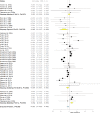

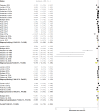
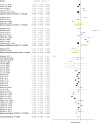

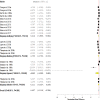
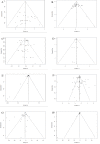
Similar articles
-
The effect of litter materials on broiler performance: a systematic review and meta-analysis.Br Poult Sci. 2019 Dec;60(6):605-616. doi: 10.1080/00071668.2019.1639143. Epub 2019 Aug 21. Br Poult Sci. 2019. PMID: 31267763
-
The effect of dietary protein and phosphorus on ammonia concentration and litter composition in broilers.Poult Sci. 1998 Aug;77(8):1085-93. doi: 10.1093/ps/77.8.1085. Poult Sci. 1998. PMID: 9706071
-
Effects of dietary coarsely ground corn and 3 bedding floor types on broiler live performance, litter characteristics, gizzard and proventriculus weight, and nutrient digestibility.Poult Sci. 2017 Jul 1;96(7):2110-2119. doi: 10.3382/ps/pew485. Poult Sci. 2017. PMID: 28339948
-
Evaluation of leaves as a litter material.Poult Sci. 1997 Aug;76(8):1138-40. doi: 10.1093/ps/76.8.1138. Poult Sci. 1997. PMID: 9251143
-
Drying, a practical technology for reduction of poultry litter (environmental) pollution: methods and their effects on important parameters.Poult Sci. 2024 Dec;103(12):104277. doi: 10.1016/j.psj.2024.104277. Epub 2024 Aug 30. Poult Sci. 2024. PMID: 39276602 Free PMC article. Review.
Cited by
-
Pre-Harvest Non-Typhoidal Salmonella Control Strategies in Commercial Layer Chickens.Animals (Basel). 2024 Dec 11;14(24):3578. doi: 10.3390/ani14243578. Animals (Basel). 2024. PMID: 39765482 Free PMC article. Review.
-
Effect of dietary interaction of sodium bentonite and litter treated with aluminum sulfate on growth performance, litter quality and serum biochemical indices of Nigerian Noiler birds.Trop Anim Health Prod. 2025 May 30;57(5):237. doi: 10.1007/s11250-025-04482-9. Trop Anim Health Prod. 2025. PMID: 40445429
-
A Review of the Effects and Production of Spore-Forming Probiotics for Poultry.Animals (Basel). 2021 Jun 29;11(7):1941. doi: 10.3390/ani11071941. Animals (Basel). 2021. PMID: 34209794 Free PMC article. Review.
-
Potential contaminants and hazards in alternative chicken bedding materials and proposed guidance levels: a review.Poult Sci. 2020 Dec;99(12):6664-6684. doi: 10.1016/j.psj.2020.09.047. Epub 2020 Sep 29. Poult Sci. 2020. PMID: 33248583 Free PMC article. Review.
-
Litter Commensal Bacteria Can Limit the Horizontal Gene Transfer of Antimicrobial Resistance to Salmonella in Chickens.Appl Environ Microbiol. 2022 May 10;88(9):e0251721. doi: 10.1128/aem.02517-21. Epub 2022 Apr 13. Appl Environ Microbiol. 2022. PMID: 35416680 Free PMC article.
References
-
- Dai Prá MA, Roll VFB. Cama de aviário: Utilização, reutilização e destino. 3ª ed. Porto Alegre: Evangraf; 2019.
-
- Vieira MFA. Caracterização e análise da qualidade sanitária de camas de frango de diferentes materiais reutilizados sequencialmente. M.Sc. Dissertação. Universidade Federal de Viçosa. 2011.
Publication types
MeSH terms
Substances
LinkOut - more resources
Full Text Sources

